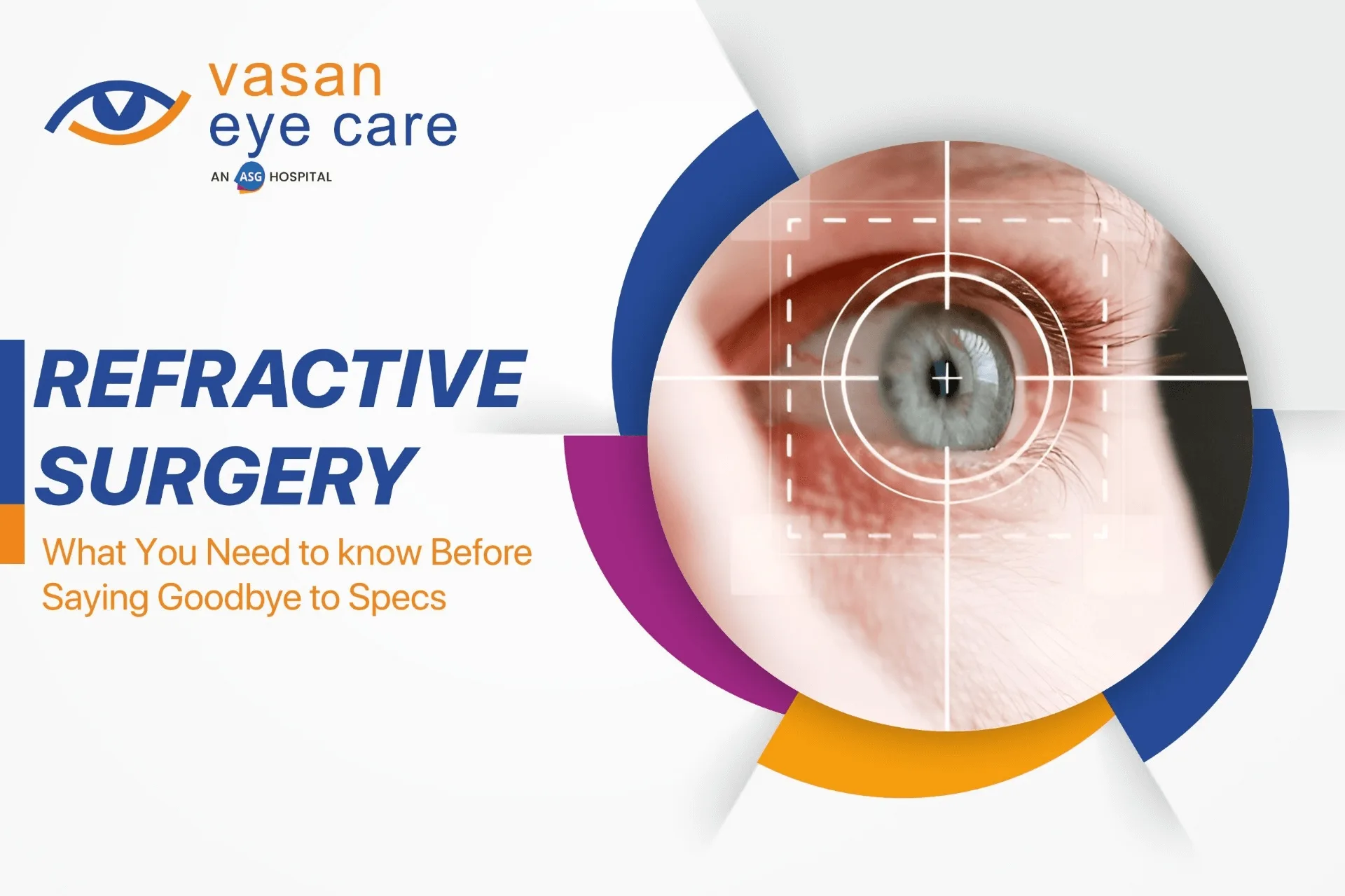If you are tired of cleaning your glasses, dealing with foggy lenses, or even taking care of your sensitive contact lenses, refractive surgery might be the solution you have been looking for. It would be so great to wake up with perfect vision without corrective lenses, right? But before you rush into scheduling your surgery, here’s a breakdown of all that you need to know, in simple terms.
What Is Refractive Surgery, anyway?
Refractive surgery is a kind of corrective eye surgery, where the shape of the cornea (the clear front part of your eye) is changed to enhance the way light focuses on your retina. It helps patients to correct common eyesight problems such as myopia, hyperopia, and astigmatism. Some of the best-known types of refractive surgery are LASIK (Laser-Assisted In Situ Keratomileusis), PRK (Photorefractive Keratectomy), and SMILE (Small Incision Lenticule Extraction).
Refractive surgery is like hitting the reset button on your vision and freeing you from glasses and contact lenses.
Is Refractive Surgery Right for You?
Before you make an appointment, you need to be sure that you are a suitable candidate. It is not a one-size-fits-all procedure. It can work wonders for many, but it is not for everyone. Here are a couple of points to consider:
- You should be at least 18 years old because, before performing surgery, your prescription has to be stable for at least a year.
- If your vision is still changing every year, refractive surgery is not for you. Your vision must be stable before refractive surgery (at least 12 months).
- If you are dealing with conditions such as an autoimmune disorder, dry eye syndrome, or cornea irregularity surgery you are not eligible for this surgery. So, a thorough general health and eye assessment is important before refractive surgery.
- It is important to be quite realistic about your expectations. It is true for some that the surgery significantly reduces or even eliminates dependence on glasses or contact, but it doesn’t guarantee a perfect 20/20 vision for everyone.
What to Expect During the Procedure
Refractive surgery is usually performed as an outpatient, which means you do not have to spend a night at the hospital. The specific steps may be a little different, depending on the type of surgery you choose.
Pre-Procedure Preparation:
Your eye doctor will take a detailed examination of your eyes before the surgery, and this entails tests to ascertain the thickness of your cornea, your eye shape, and the size of your pupil. By doing this, the whole procedure would be customized to your needs.
Numbing Drops:
Before surgery, you’ll receive a few drops to numb your eye. Then, you won’t feel pain pressure during the operation. You will be awake through the entire surgery.
The Procedure:
In LASIK surgery, a laser is used to create a thin flap in the cornea to reshape the underlying tissue of the eye, for vision correction. PRK differs slightly because it removes the outer layer of your cornea before reshaping the tissue underneath. Both procedures are generally quick and last less than half an hour. In SMILE, a laser creates a small incision in the cornea, and a thin, disc-shaped piece of tissue is removed from the cornea.
Recovery Time:
The recovery tends to be quite quick. You may have blurry vision or mild discomfort for a few days, but many patients report better vision within 24 hours. Full healing may take a few weeks, during which the doctor will give you special instructions for post-op care and follow-up visits.
Is It Worth It?
One big question coming to your mind is whether refractive surgery is worth the money. After all, you really will have to part with your hard-earned money for a procedure that promises to correct your vision. For many people, waking up with clear vision is a positive experience. It means freeing yourself from the hassle of glasses and enjoying the freedom to swim or run without worrying about them. Additionally, saving money on glasses and contacts over the long term is significant.
But it’s also important to analyze the costs, which will vary depending on the clinic and procedure. At Vasan Eye Care, we prioritize transparency in costs, which can differ based on the procedure. Our skilled surgeons are here to support you, answer your questions, and ensure your safety throughout your treatment.
Possible Risks and Side Effects
No surgery comes without risk and refractive surgery is no exception. It is considered a safe procedure, but there are potential side effects, including:
Dry eyes:
Some patients experience dry-eye symptoms after surgery. This normally resolves soon after the procedure, but in rare cases, patients suffer prolonged dryness.
Glare and halos:
Some people notice glare or halos around lights, especially at night. This usually goes away within some months.
Under or overcorrection:
Sometimes vision may not fully correct after surgery. In these cases, additional procedures or glasses and contact lenses may be needed.
Be sure to discuss these risks with a surgeon before making a decision.
Conclusion
Refractive surgery is pretty exciting, however, before you decide to say yes to it, you must have a clear understanding of the procedure, the risks, and the expectations involved. To get all your questions answered, consult with the best surgeons at Vasan Eye Care, and make the correct decision for yourself.



